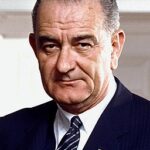The Vietnam Credibility Gap Emerges
The Vietnam credibility gap began when President Lyndon B. Johnson consistently misled Americans about war progress. Throughout 1967, LBJ delivered optimistic public statements while privately receiving pessimistic military reports. Defense Secretary Robert McNamara warned that victory seemed impossible. Yet Johnson continued promising swift success to maintain public support. 📊
Misleading Public Statements
Johnson’s administration regularly inflated enemy casualty numbers and minimized American losses. The president claimed North Vietnamese forces were weakening when intelligence suggested otherwise. Press briefings became known as “Five O’Clock Follies” due to their questionable accuracy. Military commanders felt pressured to provide favorable reports regardless of battlefield reality. ⚠️
Media Discovers the Truth
Investigative journalists began exposing contradictions between official statements and actual conditions. Television coverage showed destroyed villages despite claims of progress. The term “credibility gap” entered public vocabulary in 1967. Citizens increasingly questioned whether their government was telling the truth about Vietnam. 📰
Impact:
Immediate Political Consequences
The Vietnam credibility gap devastated Johnson’s approval ratings by late 1967. Public trust in presidential statements plummeted from 80% to 35% within two years. Anti-war protests intensified as citizens felt betrayed by government deception. Johnson announced he wouldn’t seek reelection in March 1968, citing the credibility crisis. 📉
Long-term Government Trust Erosion
The credibility gap created lasting skepticism toward presidential authority. Watergate scandal built upon distrust established during Vietnam era. Congress passed legislation requiring more transparent war reporting. Future presidents faced heightened scrutiny of their public statements. 🔥
Media Relations Transformation
The credibility gap fundamentally changed press-government relationships. Journalists adopted more adversarial approaches to official statements. “Trust but verify” became the new media standard. Television news gained credibility while government spokespeople lost it. Public began relying more on independent sources than official briefings. 🌍
